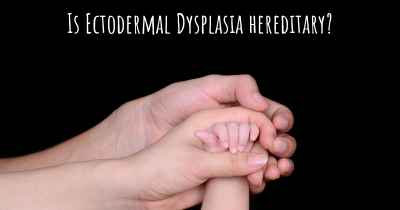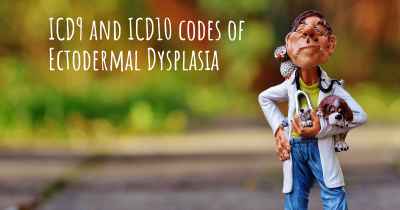What is the history of Ectodermal Dysplasia?
When was Ectodermal Dysplasia discovered? What is the story of this discovery? Was it coincidence or not?

Ectodermal Dysplasia:
Ectodermal dysplasia (ED) is a group of genetic disorders that primarily affect the development of ectodermal tissues, which include the skin, hair, nails, teeth, and sweat glands. It is a rare condition that can manifest in various ways, depending on the specific subtype of ED.
Historical Background:
The history of ectodermal dysplasia dates back to the late 19th century when the condition was first recognized and described by medical professionals. The term "ectodermal dysplasia" was coined by the German physician Alfred G. Hildebrand in 1875. However, it wasn't until the early 20th century that further research and understanding of the condition began to emerge.
Early Discoveries:
In the early 1900s, researchers such as Charles Darwin's cousin, Sir Francis Galton, and the German dermatologist Paul Weech made significant contributions to the understanding of ectodermal dysplasia. They recognized that the condition had a hereditary basis and identified several key features, including hypotrichosis (sparse hair), hypodontia (missing teeth), and hypohidrosis (reduced ability to sweat).
Classification and Subtypes:
Over time, researchers have identified various subtypes of ectodermal dysplasia, each with its own distinct set of symptoms and genetic mutations. The classification of ED has evolved as new subtypes have been discovered and characterized. Today, there are more than 200 known subtypes of ectodermal dysplasia.
Advancements in Genetic Research:
In recent decades, advancements in genetic research have greatly contributed to our understanding of ectodermal dysplasia. Scientists have identified specific genes that are associated with different subtypes of ED, allowing for more accurate diagnosis and genetic counseling.
Treatment and Support:
While there is currently no cure for ectodermal dysplasia, there are various treatment options available to manage the symptoms and improve quality of life. These may include dental interventions, such as dentures or dental implants, hair prosthetics, and sweat gland therapies.
Advocacy and Awareness:
Over the years, advocacy groups and organizations have played a crucial role in raising awareness about ectodermal dysplasia and supporting affected individuals and their families. These groups provide resources, support networks, and promote research efforts to further understand and address the challenges associated with the condition.
Conclusion:
Ectodermal dysplasia has a rich history of scientific discovery and understanding. From its initial recognition in the late 19th century to the advancements in genetic research today, our knowledge of this condition continues to grow. While there is still much to learn, ongoing research and support from the medical community and advocacy groups offer hope for improved treatments and a better quality of life for individuals with ectodermal dysplasia.








